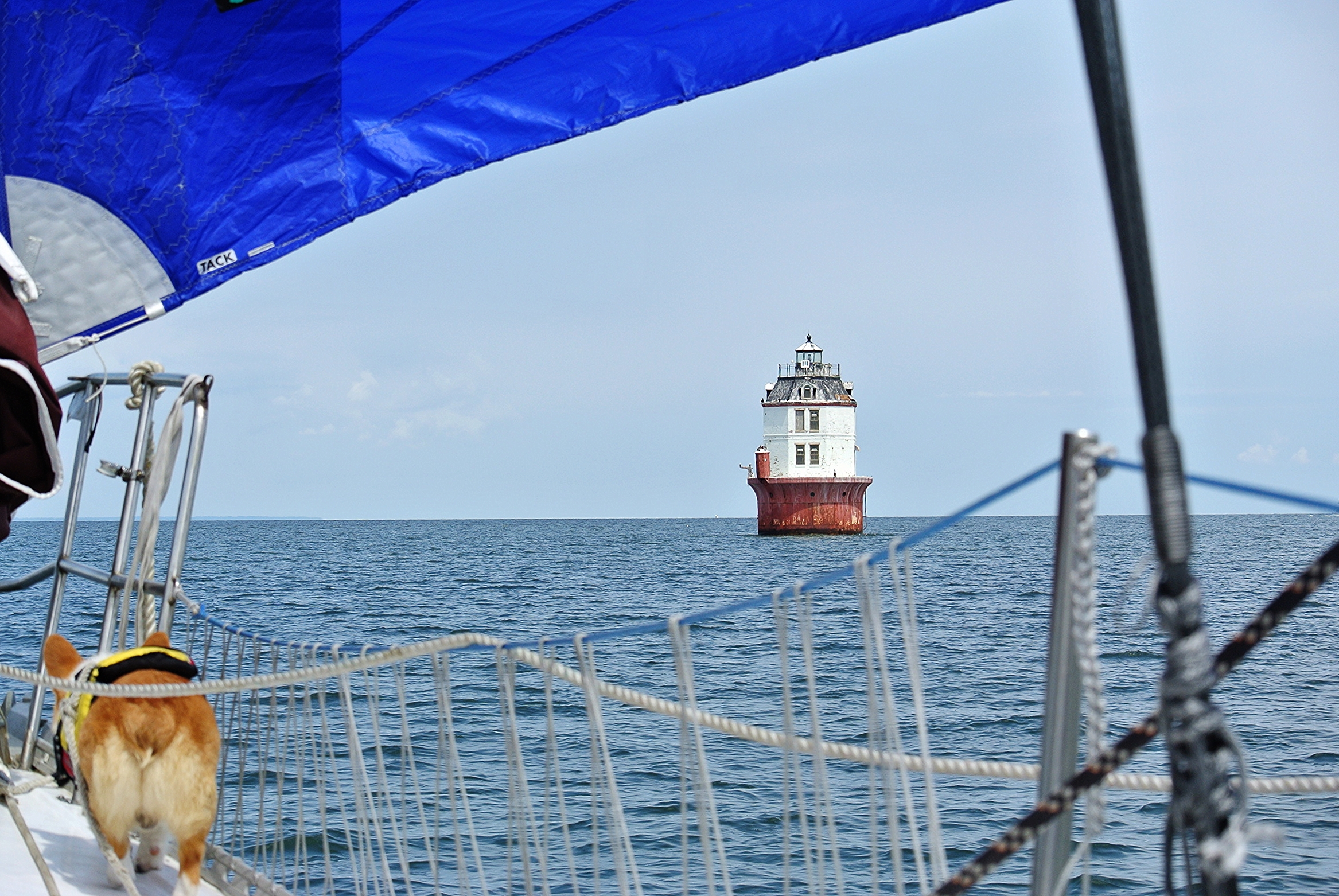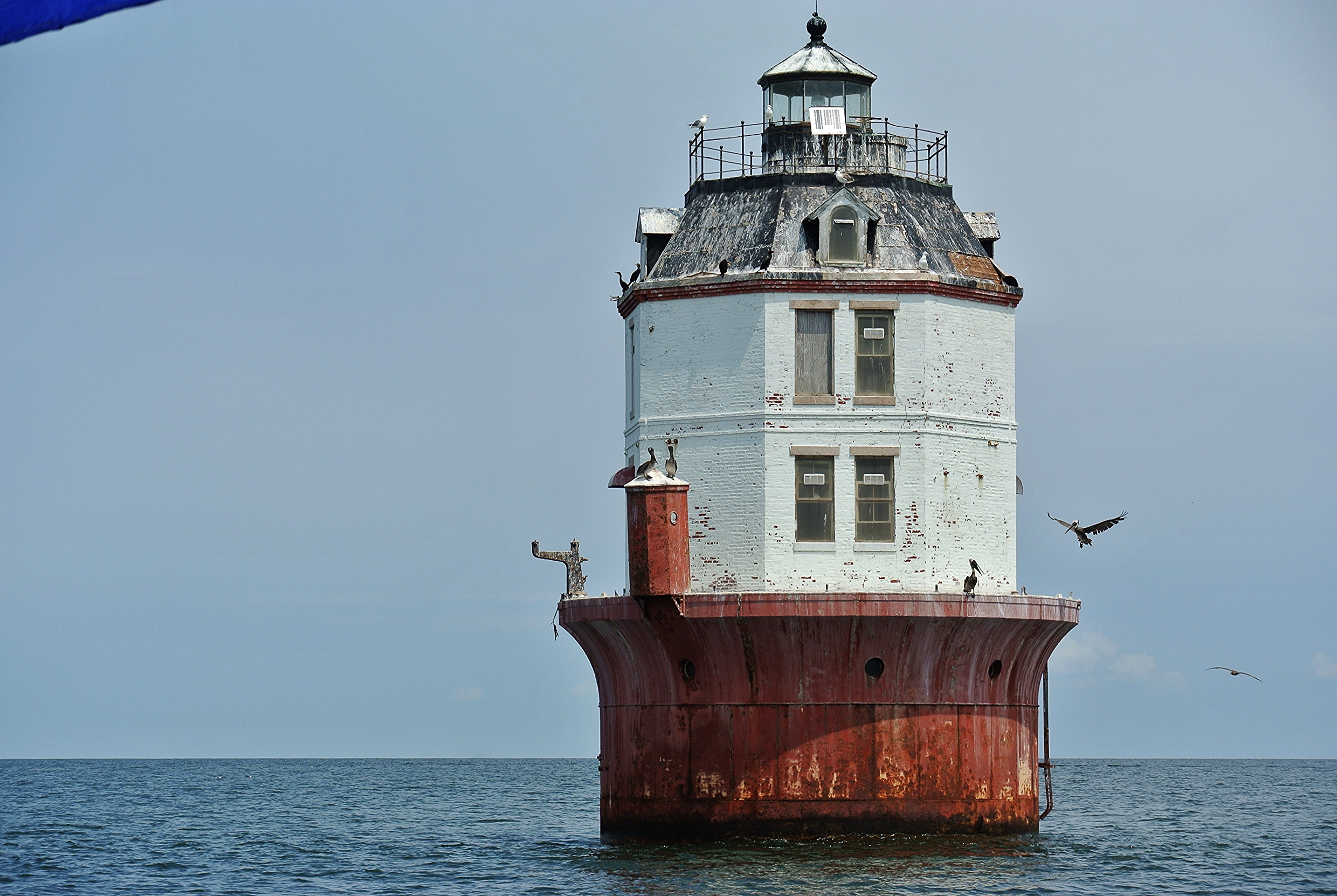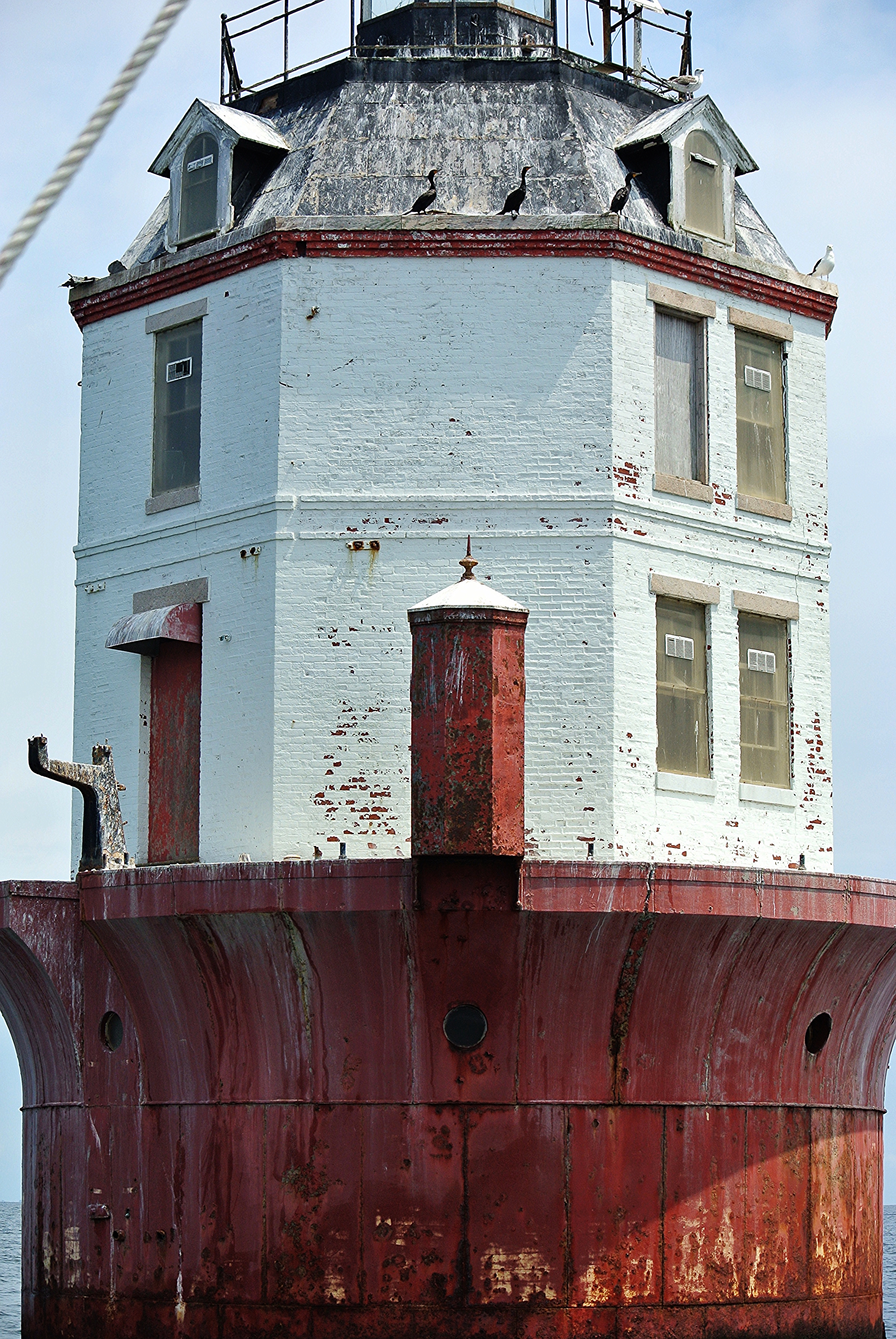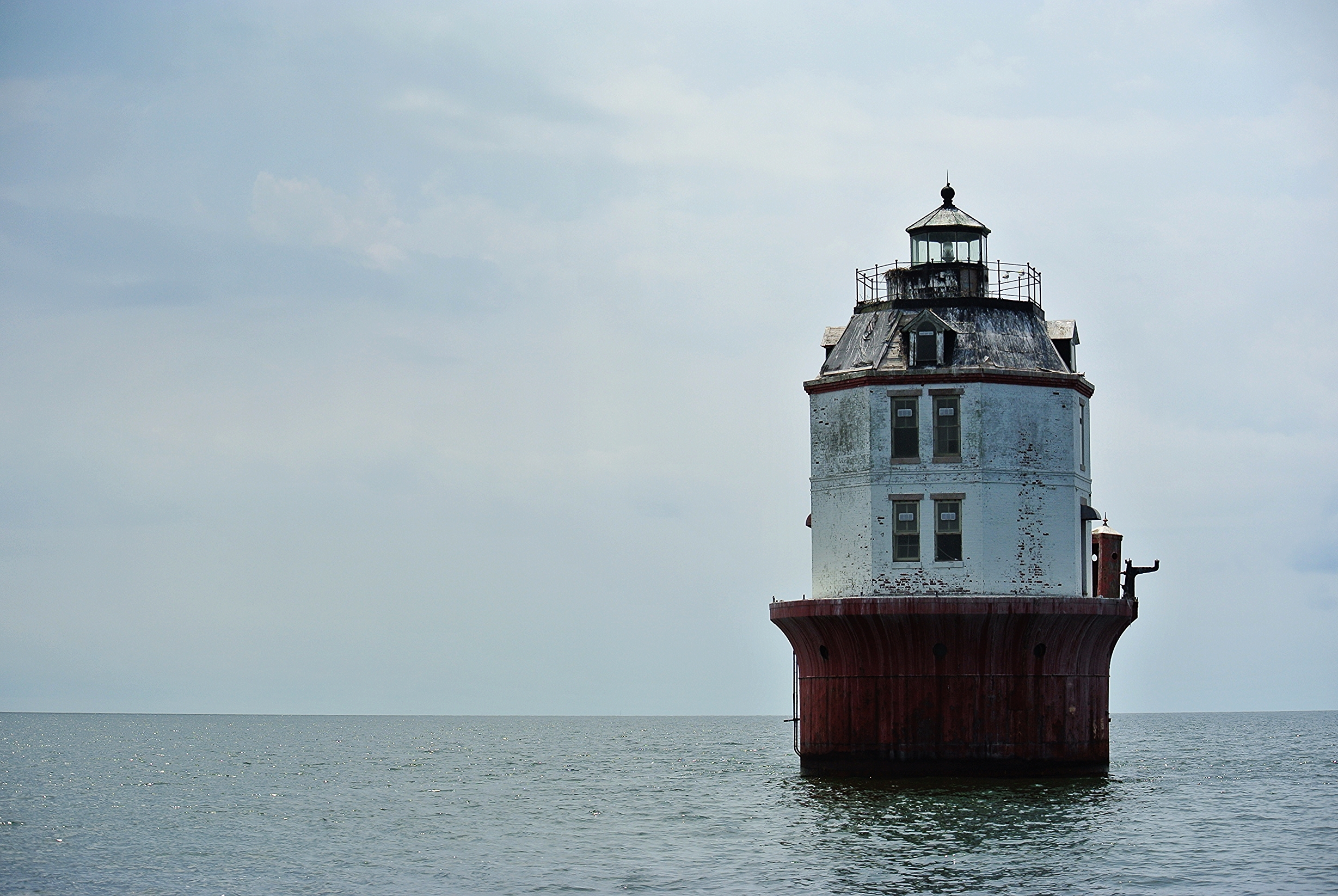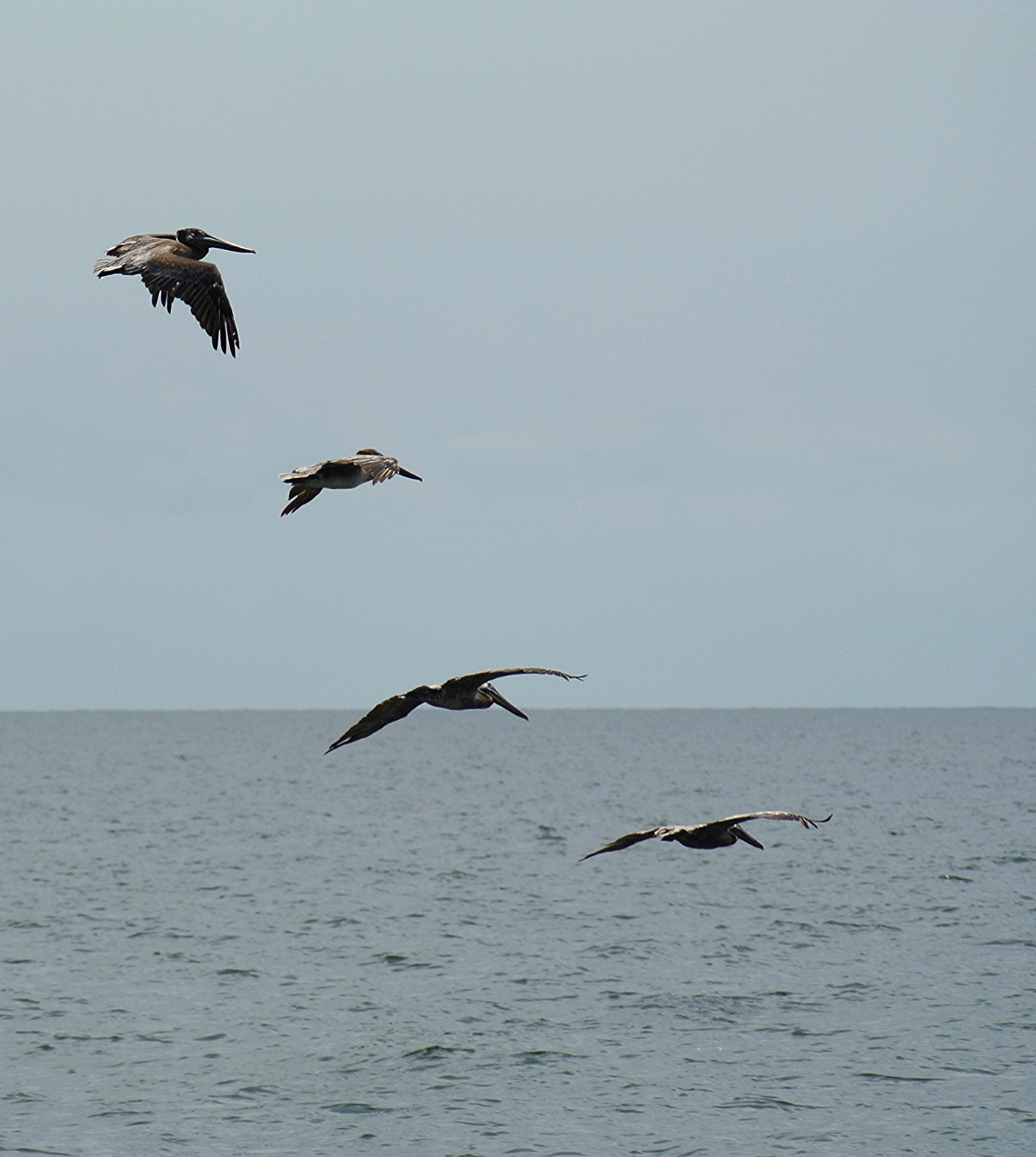Yet another day of light airs on the Chesapeake Bay. Luckily, the winds were still blowing from the South, carrying us North. Maddie seemed unimpressed by our slow progress, as we ghosted along under full sail. I reminded her how we don't have to do any work and we are leisurely being pushed along in the right direction.
Once again, as the sun began to set, the winds picked up drastically. We lowered the drifter and put a reef into the main. Sailing under staysail and reefed main, we worked our way towards the lee of a charted island with the intention of rowing Morty to shore.
By the time we got into this narrow anchorage with horrible holding, the winds were in excess of 27 knots and the sun was on the horizon. We had all good intentions of taking Morty to shore this afternoon, but it wasn't practical. The island looked much smaller in person than it did on the chart, which made me think it might be all marsh, as these quickly change in shape and size. The island offered no protection from the wind, and only served as a minor breakwater to calm the seas.
Poor Morty knew we were planning on taking him and was very upset when we changed our minds.
The anchorage we chose had a hard bottom and was only 8 feet deep. Once we dropped the hook, we drifted back into deeper water to protect the keel and rudder from groundings, but hoped that the anchor would hold on the hard bottom.
We went to sleep with 280' of chain out with the anchor sitting 8 feet under water. All this rode couldn't compensate for the poor holding and we began to drag. By choosing the anchorage properly, we were ok with the dragging anchor because we were windward to a very nice anchorage of soft sand. The Bruce Claw slid 90 feet across the hard bottom until it arrived on the soft sand and sunk right in!
We were in bed when the anchor dragged, feeling the boat turn beam to the seas as we dragged and then turning bow to the wind as the anchor took hold again. Not the best sleep, but we did get to rest before arriving in South River the next day.








